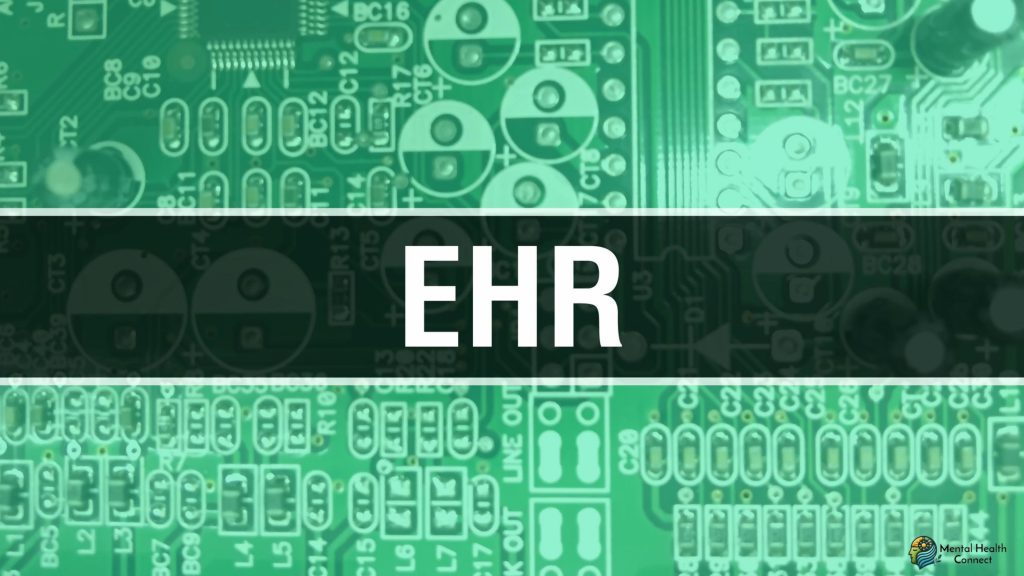How to Choose the Right EHR System for Your Therapy Practice

As mental health professionals, finding the right Electronic Health Record (EHR) system can dramatically transform your practice’s efficiency, client experience, and regulatory compliance. With numerous options available, selecting the perfect EHR requires careful consideration of your unique practice needs.
Understanding EHR Fundamentals

Electronic Health Record systems serve as the digital backbone of modern therapy practices. Unlike traditional paper records, EHRs securely store client information, session notes, treatment plans, and billing data in one centralized location. The right system streamlines administrative tasks and enhances clinical workflow.
For example, when a client calls to schedule an appointment, a comprehensive EHR allows your staff to quickly access their records, check insurance eligibility, and find available time slots all within the same system.
Assessing Your Practice’s Specific Needs
Before exploring available options, conduct a thorough assessment of your practice requirements:
- Practice size and growth plans: Solo practitioner needs differ from group practices
- Specialization: Certain EHRs cater to specific therapeutic approaches
- Budget constraints: Balance upfront costs against long-term value
- Technical capabilities: Consider your team’s comfort with technology
A small practice specializing in CBT might benefit from different features than a large multi-disciplinary clinic offering diverse treatment modalities. Your EHR choice should reflect these differences.
Essential Features to Consider

Clinical Documentation Tools
Effective documentation tools should streamline note-taking while maintaining clinical standards. Look for:
- Customizable templates for different session types
- Progress note functionality with treatment plan integration
- Automated reminders for incomplete documentation
- Digital signature capabilities
For instance, TherapyNotes offers specialized templates for mental health practitioners that align with best practices in clinical documentation, while SimplePractice provides customizable note templates that can be tailored to your specific therapeutic approach.
Client Portal Functionality
Today’s clients expect digital convenience. A robust client portal should offer:
- Online appointment scheduling
- Secure messaging
- Intake form completion
- Document sharing capabilities
- Telehealth integration
TheraNest, for example, features a comprehensive client portal where clients can complete paperwork before their first appointment, reducing administrative burden during sessions. Meanwhile, Therapy Partner provides a streamlined self-scheduling system that integrates seamlessly with your calendar.
Billing and Insurance Management
Revenue cycle management features save time and maximize reimbursement:
- Insurance eligibility verification
- Claim submission and tracking
- Patient statement generation
- Credit card processing
- Financial reporting dashboards
Systems like TherapyAppointment offer integrated billing solutions that can check insurance eligibility in real-time and submit claims electronically, while Kareo specializes in streamlined billing workflows that reduce claim rejections.
Security and Compliance
Mental health data requires stringent protection:
- HIPAA compliance certification
- BAA (Business Associate Agreement) provision
- Role-based access controls
- Audit trails for all system activity
- Regular security updates
Comparing Top EHR Vendors

When evaluating potential systems, consider these differentiating factors:
- User interface intuitiveness
- Mobile application availability
- Customer support responsiveness
- Training resources quality
- Implementation timeline
- Integration capabilities with existing tools
For example, while TherapyNotes offers excellent clinical documentation features, SimplePractice might edge ahead in telehealth capabilities. TheraNest might provide better group practice management tools than CounSol.com, but the latter might offer superior client engagement features.
Implementation Best Practices
A successful EHR implementation requires thoughtful planning:
- Designate an implementation team leader
- Create a realistic timeline with milestones
- Schedule comprehensive training sessions
- Migrate data systematically
- Test extensively before full deployment
When transitioning to TherapyNotes, for instance, practices often find success by migrating active clients first, followed by recently inactive clients, while maintaining paper records for historical cases.
Cost Considerations Beyond the Sticker Price

When budgeting for an EHR, factor in:
- Base subscription costs
- Per-provider fees
- Implementation charges
- Training expenses
- Add-on feature costs
- Potential hardware upgrades
While SimplePractice might advertise a competitive monthly rate, additional costs for telehealth or electronic claim submission could increase the total investment. Similarly, TheraNest’s tiered pricing model might offer better value for larger practices than flat-rate alternatives.
Making Your Final Decision
Request demonstrations from your top candidates and involve key stakeholders in the evaluation process. Consider creating a scoring matrix based on your practice’s priorities to objectively compare options.
For example, if you’re deciding between TherapyNotes and SimplePractice, you might weigh telehealth capabilities heavily if you conduct many virtual sessions, or prioritize insurance billing features if you work with multiple insurance panels.
Many vendors offer free trials take advantage of these to test systems with real-world scenarios. Pay particular attention to daily workflows like scheduling appointments, documenting sessions, and submitting claims to ensure the system enhances rather than hinders your practice operations.
Remember that the perfect EHR aligns with your practice’s unique needs. A solo practitioner might thrive with Therapy Partner’s streamlined interface, while a multi-location group practice might require the advanced reporting capabilities of Valant or TheraNest.
By thoroughly assessing your requirements and carefully evaluating options, you’ll find a system that enhances both your clinical work and practice management, ultimately improving care delivery and practice sustainability.
FAQ: Choosing an EHR for Your Therapy Practice
What’s the typical implementation timeline for a therapy practice EHR?
Most practices can expect a 4-8 week implementation process, depending on practice size and data migration needs.
How much should I budget for an EHR system?
Solo practitioners typically spend $200-600 monthly, while group practices may invest $300-1200+ monthly depending on features and provider count.
Can EHRs accommodate different therapeutic approaches?
Yes, many modern EHRs offer customizable templates for various modalities including CBT, psychodynamic therapy, and family systems approaches.
What technical support should I expect from an EHR vendor?
Look for vendors offering multiple support channels (phone, email, chat), extended hours, and dedicated implementation assistance.
How can I evaluate EHR security measures?
Request the vendor’s security documentation, verify HIPAA compliance certification, and ask about encryption methods and breach notification procedures.
-
 How to Support Someone with OCDApril 17, 2025
How to Support Someone with OCDApril 17, 2025 -


Leave a Reply